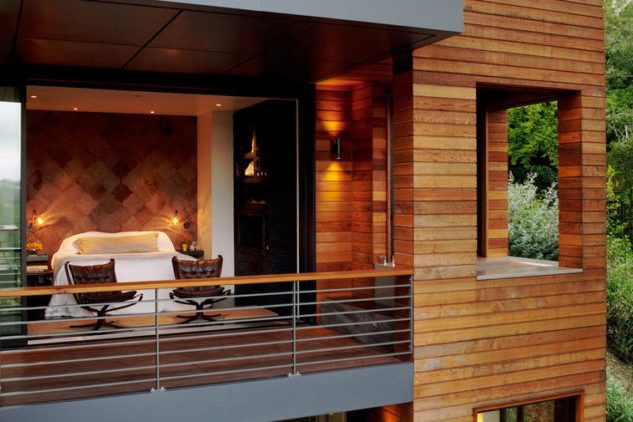Temperatures are soaring. So is your power bill. Keep your home cooler this summer, and boost your air conditioning efficiency, with a few simple tips.
SUNSET STAFF – July 12, 2021
If you’re reading this, you’re probably hot. So hot that you’ve taken to the internet to figure out how to keep your house cool, with or without air-conditioning. We’ve compiled a list of short- and long-term solutions to help use energy and better circulation to keep interior temperatures within a manageable, livable range. The key to this efficiency is having a solid thermal envelope for your home. In a typical residence, you’ll see about 30 percent air leakage in the house duct system. This means hot air from the attic and from outdoors is leaking into the living spaces through electric plug sockets, recessed light fixtures, and the like. Since roughly 17% of the energy use in an average house goes to cooling the air (that number skews higher in warmer climates), that means you’re wasting money. Use this as a guide to more efficient cooling. And if you still don’t see a difference in temperature and comfort levels, consider have a local home-energy auditor do an infiltration test (or whole-house energy audit) to identify where leaks are located.
How to Keep Your Home Cool Without Overheating the Planet
• Heat shield: Have dense insulation―such as foam or blown cellulose―installed in your attic, if you have one.
• Thermal envelope: Seal air leaks around electrical sockets, doors, and windows with weather-stripping.
Increase Ventilation
• Hot air out, cool air in: Obvious, but worth repeating―on hot days, keep your doors, windows, and shades closed until it’s cooler outside.
• Fans don’t cool air, they move it: Fans cool you only when you’re in the room with them. So turn them off when you leave.
Take Advantage of Shade
• Sun block: Exterior awnings and trees keep solar heat from direct contact with windows and roofs.
• No more greenhouse effect: Install reflective film on your window panes, or use sunscreen-fabric curtains or roller shades, to block rays. If you’re investing in new windows, choose panes with a low solar heat gain coefficient (SHGC).
Assess Your House’s Current Situation with These Three Questions
1. Is there an attic that can be insulated? How much existing insulation is there? How well is it insulated?
2. Are there eaves that are blocking some of the summer sun? (Overhangs should block the sun in the summer and allow it to come in during the winter.)
3. Is there an existing cooling system? If so, is it properly sized? A too-small system has to work over-time to cool a house and may not use power efficiently. Consider installing ductless mini-split systems or window units in the rooms that are too warm, or too far away from the main system to be cooled effectively.
Optimal Solution
For an average house with an attic in a temperate climate, we recommend reducing the cooling load as much as possible and making use of passive cooling, via the following steps.
• Improve the sealing around all windows and doors.
• Ensure that there’s sufficient attic insulation to create a thermal barrier.
• Install a radiant barrier if there are ducts in your attic or your AC is in the attic―install it under the roof deck, not on the attic floor.
• Add low-E glazing to windows.
• Install a whole-house fan. Whole-house fans―which can use up to 90 percent less energy than AC units―draw fresh cool air into the house at night, exhausting hot air through vents. For more details, visit airscapefans.com.
• Install high-quality windows with a low solar heat gain co-efficient (SHGC).
The passive-cooling route is very cost effective from a long-term standpoint (i.e., you’re not paying to condition the air, you’re just paying for the equipment and installation).
Things to Keep in Mind When You’re Thinking of Installing a Whole House Fan
• It will need proper ventilation.
• You may need more than one whole house fan, depending on the size of your home.
• Noise may be a factor for older models; newer models are quieter.
• The economics of operation: A fan requires more upfront cost than an AC unit, but its operating costs can be as little as 1/20th that of air-conditioning.
Things to Keep in Mind When Shopping for Windows
• U-value: This is the measure of how well the panes keep heat in the house from escaping.
• Solar heat gain coefficient (SHGC): This measures how much solar heat the window prevents from entering the house.
If you don’t have an attic and therefore can’t install insulation, you may consider re-roofing and re-insulating the roof.
• Use rigid foam insulation and closed-cell spray foam with a reflective coating (aka “cool roofs”).
Alternative Solution
Can’t bear to give up your air conditioner? Here’s how to reduce the load.• Close your windows and blinds so the AC functions as efficiently as possible.
• Turn up your thermostat: You use 1 to 3 percent less energy for every degree that it’s set above 72.
• Use the AC only on the hottest days, and remember to turn off your system (or set it to “away” mode) when you’re traveling.
• Any exterior AC equipment should be installed on the north or shaded side of the house, with at least 18 inches of free space around it.
• If you’re buying a new AC system, choose the proper size for your space―a unit that’s too large will cycle on and off repeatedly, which wastes energy. Also, look for a high seasonal energy-efficiency ratio (SEER) rating―16 to 18, if possible.
• If air handling equipment is located in the attic, we recommend encapsulating the attic with air-impermeable spray foam and bringing the attic into the building envelope. This prevents hot attic air (150° Fahrenheit or higher) from infiltrating the duct system.







